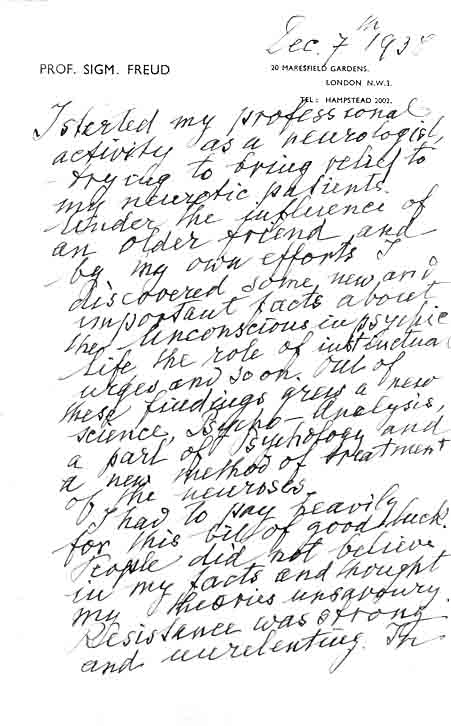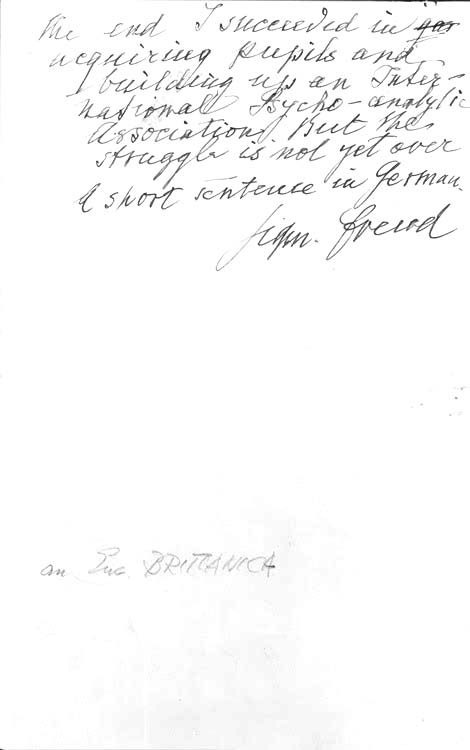You’re only as old as you feel, right? The platitude may be true. In a scientifically verifiable sense, “feeling”—a state of mind—may not only determine psychological well-being but physical health as well, including the natural aging processes of the body.
Harvard psychologist Ellen Langer has spent decades testing the hypothesis, and has come to some interesting conclusions about the relationship between mental processes and bodily aging. In order to do the kind of work she has for decades, she has had to put aside the thorny “mind-body” problem—a longstanding philosophical and practical impasse in figuring out how the two interact. “Let’s forget about how you get from one to the other,” she tells CBS This Morning in a 2014 interview above, “and in fact see those as just words…. Wherever you’re putting the mind, you’re necessarily putting the body.”
What happens to the one, she theorized, will necessarily affect the other. In a 1981 experiment, which she called the “counterclockwise study,” she and her research team placed eight men in their late 70s in a monastery in New Hampshire, converted to transport them all to 1959 when they were in their prime. Furniture, décor, news, sports, music, TV, movies: every cultural reference dated from the period. There were no mirrors, only photos of the men in their 20s. They spoke and acted as though they had traveled back in time and gotten younger.
The results were extraordinary, almost too good to be true, she felt. “On several measures,” The New York Times reported in 2014, “they outperformed a control group that came earlier to the monastery but didn’t imagine themselves back into the skin of their younger selves, though they were encouraged to reminisce.” The “counterclockwise” participants “were suppler, showed greater manual dexterity and sat taller…. Perhaps most improbably, their sight improved” as well as their hearing. Given the seemingly miraculous outcomes, tiny sample size, and the unorthodoxy of the experiment, Langer decided not to publish at the time but continued to work on similar studies looking at how the mind affects the body.
Then, almost thirty years later, the BBC contacted her about staging a televised recreation of the monastery experiment, “with six aging former celebrities as guinea pigs,” who were transported back to 1975 by similar means. The stars “emerged after a week as apparently rejuvenated as Langer’s septuagenarians in New Hampshire.” These experiments and several others Langer has conducted over the years strongly suggest that chronological age is not a linear clock pushing us inexorably toward decline. It is, rather, a collection of variables that include psychological well-being and something called an “epigenetic clock,” a mechanism that UCLA geneticist Steve Horvath has discovered directly correlates with the aging process, and may show us how to change it.
But while Horvath has yet to answer several pressing questions about how certain genetic mechanisms interact, Langer has put such questions aside in favor of testing the mind-body connection in a series of experiments, which engage the aging—or people with specific conditions—in studies that stretch their minds. By creating illusions like the monastery time machine, Langer has found that perception has a significant effect on aging. If we perceive ourselves to be younger, healthier, more capable, more vibrant, despite the messages about how we should look and act at our chronological age, then our cells and tissues get the message. Not only can a change in perception affect aging, but also, Langer theorizes, obesity, cancer, diabetes, and other chronic or life-threatening conditions. Much of her research here gets spelled out in her book, Counterclockwise: Mindful Health and the Power of Possibility.
“Whether it’s about aging or anything else,” says Lager, “if you are surrounded by people who have certain expectations for you, you tend to meet those expectations, positive or negative.” The social expectation for the aging is that they will get weaker, less capable, and more prone to deterioration and illness. Ignoring these expectations and changing our perception of what chronological age means—and doesn’t mean—Langer says, seems to actually slow or partially reverse the decline and to ward off disease. Those psychological changes can come about through interventions like caring for children, plants, or animals and using mindfulness practices to learn how to be attentive to change.
You can read more about Langer and Horvath’s specific findings on aging, psychology, and epigenetics at Nautilus.
Note: you can get Langer’s book–Counterclockwise Mindful Health and the Transformative Power of Possibility–as a free audiobook through Audible.com’s free trial program. Get more details on the free trial here.
Related Content:
How Baking, Cooking & Other Daily Activities Help Promote Happiness and Alleviate Depression and Anxiety
How Mindfulness Makes Us Happier & Better Able to Meet Life’s Challenges: Two Animated Primers Explain
How the Japanese Practice of “Forest Bathing”—Or Just Hanging Out in the Woods—Can Lower Stress Levels and Fight Disease
Josh Jones is a writer and musician based in Durham, NC. Follow him at @jdmagness





